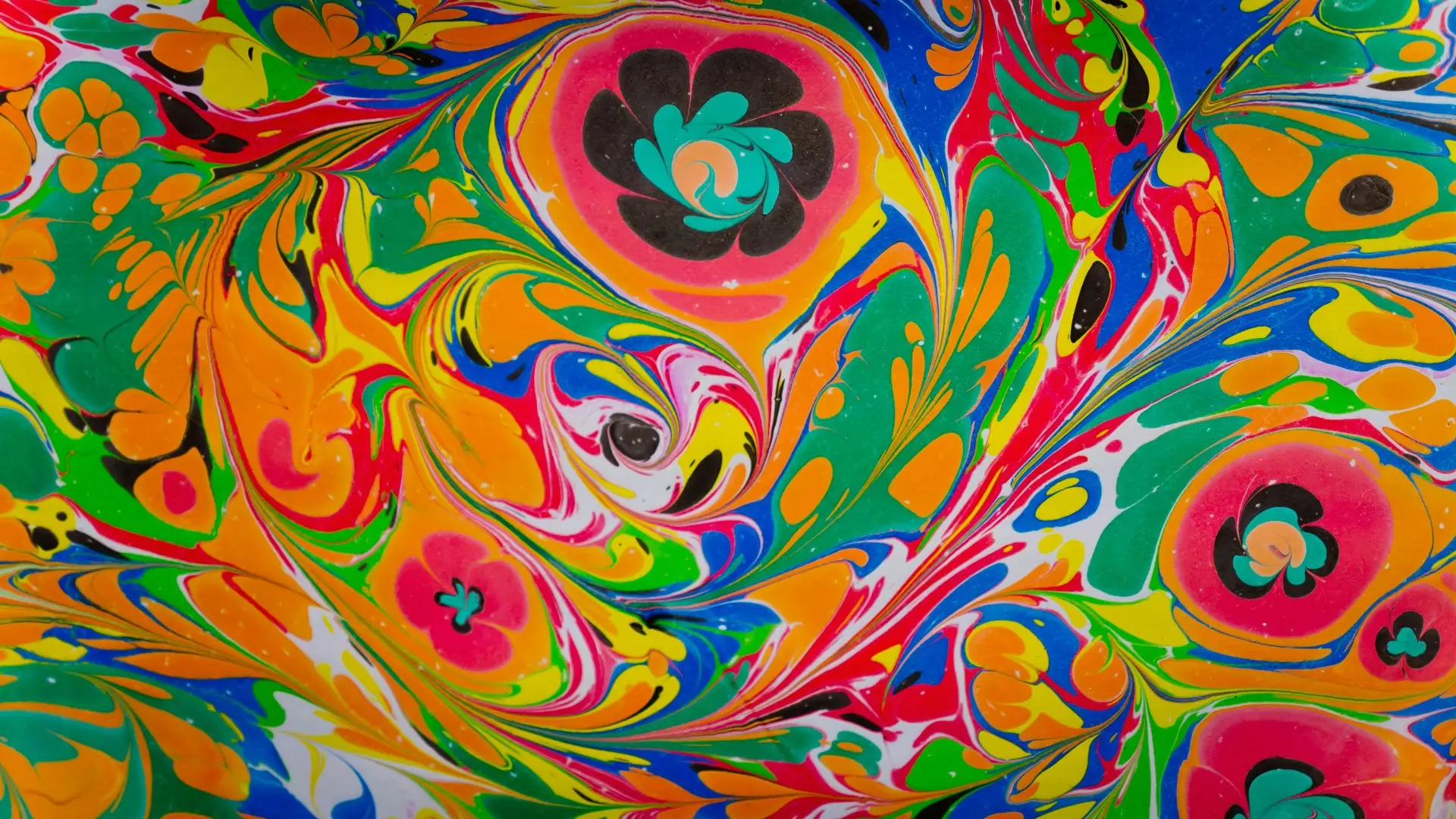How Orthodox Christmas Traditions Differ Around the World

Looking for more amazing products? Check out our online store and explore our collection here! Happy shopping!
Before diving in, please note: This post is for informational purposes only. If you’d like to know more about how we approach topics, feel free to check out our friendly Disclaimer Page.
Hey there, amazing readers! 
We’re committed to delivering quality posts, and your support (even just sticking around despite the ads) means everything to us. So, bear with us, and thanks for helping us keep the good vibes rolling. Now, on to the fun stuff!
TRANSLATE BUTTON AT THE END OF THE ARTICLE
A Quick Overview
Christmas is a time filled with joy, warmth, and celebration.
For Orthodox Christians, this holiday carries deep spiritual significance and is celebrated on January 7th, differing from the Western tradition of December 25th.
Across various countries, the way people celebrate Orthodox Christmas varies greatly.
Each culture brings its own flavor, customs, and traditions to this cherished occasion.
In this article, we will explore those differences, diving into the richness of Orthodox Christmas traditions around the globe.
A Global Celebration: Understanding Orthodox Christmas
Orthodox Christmas celebrations are as diverse as the cultures from which they spring.
While many Orthodox Christians celebrate on January 7th, the traditions tied to this date can vary widely.
From Greece to Russia, from Ethiopia to Serbia, each country has its own unique take on Christmas.
In Greece, for instance, Christmas is known as "Christougenna." Celebrations begin on Christmas Eve with a midnight church service.
The focus is on family and faith, with traditions like singing carols and preparing a special meal that often features roasted pork.
In Russia, Christmas is steeped in the rich traditions of the Russian Orthodox Church.
The celebration involves a 40-day fast leading up to Christmas.
On Christmas Eve, families gather for "Sviata Vechera," a 12-dish meal representing the 12 apostles.
After dinner, they attend a late-night liturgy.
In Ethiopia, Orthodox Christians celebrate Christmas with the observance of "Genna." This is a day filled with rituals, including a special mass in the early hours of the morning.
Traditional foods such as doro wat (spicy chicken stew) are served after the church service.
Wherever you go, the essence of Orthodox Christmas remains the same: a time for reflection, family, and deep-rooted faith, with each culture adding its unique twist to the celebration.
The Meaning Behind Orthodox Christmas Traditions
At its core, Orthodox Christmas represents the birth of Jesus Christ.
Each tradition serves to honor this momentous event, connecting believers to their faith and culture.
The significance of these traditions goes beyond mere rituals; they serve as a reminder of hope, love, and the spirit of giving.
For many, the preparation for Christmas is as meaningful as the day itself.
In the weeks leading up to the holiday, believers engage in fasting and prayer, focusing their hearts on spiritual growth.
This time of penance allows individuals to reflect on their lives and their relationship with God.
In Russia, for example, the fast known as Advent is a time for spiritual cleansing.
It prepares the heart for the joyous occasion of Christmas.
Breaking the fast with a festive meal reinforces community and family bonds.
In Egypt, Coptic Christians also observe a period of fasting leading up to Christmas, known as the "Nativity Fast." The focus is on humility and reflection, with the goal of celebrating Christ’s birth with purity and devotion.
These traditions embody the essence of what Orthodoxy teaches about the importance of family, faith, and community.
They remind us that Christmas is about more than just the festivities; it’s about the collective journey of believers towards a deeper understanding of their faith.
Unique Christmas Eve Customs Across Orthodox Countries
Christmas Eve serves as a focal point for many Orthodox traditions.
It’s a time when families come together, often culminating in a midnight church service.
However, the customs leading up to this service can vary significantly.
In Bulgaria, the Christmas Eve dinner, known as "Badni Vecher," is a vegetarian feast.
Families set the table with an odd number of dishes, symbolizing abundance.
It’s common to place hay under the tablecloth, representing the manger where Jesus was born.
Meanwhile, in Ukraine, the festive meal is called "Sviat Vechir." It typically features 12 dishes, mirroring the apostles.
At the center of the table, a sheaf of wheat, or "Didukh," symbolizing the ancestors, is placed.
This rich tradition emphasizes respect for family heritage.
In Serbia, families prepare for Christmas Eve with a unique custom called "Badnjak." They bring an oak branch into the home, which is decorated and then burned in a symbolic gesture of warmth and light.
This act serves as a reminder of Jesus as the light of the world.
In Ethiopia, Christmas Eve is observed with a midnight mass known as "Gahad." The faithful dress in traditional white garments and gather for prayer and singing, marking the transition into Christmas Day.
Each of these customs enriches the holiday experience, creating a tapestry of cultural uniqueness, while reaffirming a shared faith.
Traditional Foods: A Feast for the Senses
Food plays a central role in Orthodox Christmas celebrations, highlighting the importance of communal meals and traditional dishes.
Each region boasts its own culinary delights that bring families together during this festive time.
In Greece, the Christmas meal often features "Christopsomo," a sweet bread decorated with a cross.
This bread symbolizes Jesus and is a staple on the holiday table.
Families also prepare a variety of meats, such as roast lamb or pork, accompanied by seasonal vegetables.
Russia’s "Sviata Vechera" meal includes a variety of dishes, such as "Kutya," a sweet grain pudding made of wheat, honey, and poppy seeds.
This dish is not only delicious but also holds spiritual significance, representing abundance and remembrance for the deceased.
In Ethiopia, the Christmas feast is centered around "Doro Wat," a spicy chicken stew served with injera, a flatbread.
The meal is a social affair, with family and friends gathering to share in the joy of Christmas.
In Serbia, the festive meal includes "Pečenica," roasted pork, and "Sarma," cabbage rolls.
These dishes are often accompanied by homemade bread and local wines.
The preparation and sharing of these meals create a sense of community and joy.
Ultimately, no matter where you are, the holiday table is filled with delicious foods, laughter, and stories shared among loved ones.
Iconic Symbols and Decorations in Orthodox Christmas
Symbols play a significant role in Orthodox Christmas, each carrying profound meaning.
From candles to stars, these elements create a festive atmosphere while reminding believers of their faith.
In many Orthodox homes, the Christmas tree is adorned with symbols of faith.
In Russia, for instance, the tree may be decorated with stars representing the Star of Bethlehem.
Candles are also placed on the table, illuminating the room and symbolizing Christ as the light of the world.
In Greece, homes are decorated with a "Karavaki," a wooden ship adorned with lights and ornaments.
This tradition stems from the country’s maritime heritage and symbolizes the importance of family and the bond of sharing.
In some regions, the "Nativity" scene is a beloved decoration, depicting the birth of Jesus.
Families often create their own scenes, adding personal touches that reflect their culture and beliefs.
Regardless of the symbols used, the decorations serve as a reminder of the joyous celebration of Christ’s birth, fostering an atmosphere of warmth and love.
Family Gatherings: Strengthening Bonds Through Tradition
Family is central to Orthodox Christmas celebrations.
It’s a time when relatives come together to share meals, stories, and laughter.
These gatherings serve not only to celebrate the holiday but to strengthen familial bonds.
In Russia, families often gather on Christmas Eve for the traditional "Sviata Vechera" dinner.
This meal is a time of sharing and reflection, with each dish representing an important aspect of their faith.
In Ethiopia, the communal nature of Christmas is emphasized through the "Gahad" celebration.
After the midnight mass, families come together to share a festive meal, reinforcing the sense of community and connection.
In Greece, families participate in a candlelit tradition known as "Kalanda," where children go from house to house singing carols.
This act not only spreads Christmas cheer but also creates a sense of unity among neighbors and friends.
These gatherings highlight the importance of relationships and the joy of being together.
Celebrating as a family cements memories that last a lifetime, enriching the tradition of Christmas.
The Role of the Church in Orthodox Christmas Celebrations
The church plays an indispensable role in Orthodox Christmas celebrations.
It serves as the spiritual heart of the community, where believers gather to worship and celebrate the birth of Christ.
In many countries, Christmas services begin on Christmas Eve with a midnight liturgy.
The atmosphere is reverent and joyous, with hymns and prayers filling the air.
This service is often the highlight of the holiday, drawing families together in faith.
In Greece, the church is adorned with candles and decorations, creating a beautiful setting for worship.
The service often includes the reading of the Nativity story and the singing of hymns that echo through the centuries.
In Ukraine, Christmas Eve services culminate in a midnight liturgy filled with traditional carols.
The community comes together, united in their faith and joy for the celebration of Christ’s birth.
In Ethiopia, the church service is vibrant and communal.
The faithful dress in traditional white garments and participate in a celebration filled with music and prayer.
These communal worship experiences reinforce the significance of faith and community during this holy time, reminding believers of the central role of the church in their lives.
Christmas Carols: Melodies of Joy and Faith
No celebration is complete without music!
Orthodox Christmas carols fill the air, bringing an added layer of joy to the festivities.
Each culture has its own set of carols, often passed down through generations.
In Russia, the traditional carol "Boh predbavlennyi" celebrates Christ’s birth with heartfelt lyrics.
Families often sing these carols while gathering around the tree, creating an atmosphere of warmth and joy.
In Greece, "Kalanda" are sung by children as they visit homes, spreading Christmas cheer.
These carols celebrate the Nativity and are a vital part of the holiday tradition, reinforcing community spirit.
Ethiopian Christmas music features lively rhythms and melodies that reflect the country’s rich cultural heritage.
The carols shared during the Gahad service resonate with joy and faith, enhancing the communal experience.
In Bulgaria, carols known as "Koledars" are sung by groups of young men who go door-to-door.
This tradition strengthens community ties and ensures that the spirit of Christmas is shared widely.
These musical traditions weave together communities and families, creating a tapestry of shared joy and faith during the Christmas season.
Gifts and Giving: The Spirit of Generosity
Gift-giving during Orthodox Christmas carries special significance.
It reflects the selflessness and generosity that encapsulate the holiday spirit.
However, the ways in which gifts are exchanged can differ greatly.
In many Orthodox cultures, gifts are often given on January 1st, coinciding with the feast day of St.
Basil.
In Greece, families exchange gifts in honor of this beloved saint, emphasizing the theme of generosity.
In Russia, children often receive gifts from "Ded Moroz," or Father Frost, on New Year’s Eve.
This mix of Christmas and New Year’s traditions showcases the blending of cultures and customs over time.
In Ethiopia, it’s customary to give gifts to those in need during the Christmas season, embodying the spirit of kindness and charity.
This act emphasizes the importance of community support and generosity toward others.
Regardless of the timing or style, the spirit of giving remains a common thread among Orthodox traditions.
It’s about sharing love and kindness with family, friends, and the less fortunate.
New Year’s Traditions: A Complement to Christmas
In many Orthodox cultures, New Year’s celebrations blend seamlessly with Christmas festivities.
The two holidays are often intertwined, creating a unique seasonal experience filled with joy.
In Russia, New Year’s Eve is celebrated with family gatherings and a feast, often culminating in a visit from Ded Moroz.
This figure brings gifts and creates a sense of wonder and excitement among children.
In Greece, the New Year is marked by the cutting of the "Vasilopita," a cake dedicated to St.
Basil.
A coin is hidden inside, and whoever finds it will have good luck for the year.
This beautiful tradition connects the two celebrations in a meaningful way.
In Serbian culture, New Year’s Day is celebrated with family meals and festivities that continue through the holiday season.
Similar to Christmas, the emphasis on family and community remains strong.
In Ethiopia, the New Year is celebrated in September but is also tied to the Christmas season.
The festive spirit extends beyond December, blending traditions and celebrations throughout the year.
These interconnected traditions serve to create a period of joy and reflection, highlighting the importance of family and community during the holiday season.
Special Events and Festivals in Orthodox Communities
Throughout the Orthodox Christmas season, various events and festivals take place, enriching the cultural tapestry of the celebrations.
From church services to community gatherings, these events foster a sense of togetherness.
In Russia, the "Christmas Tree Festival" is a beloved tradition where communities come together to decorate Christmas trees.
This event encourages creativity and generates a festive atmosphere filled with laughter and joy.
In Greece, the "Blessing of the Waters" ceremony is an essential part of the Christmas season.
This event commemorates the baptism of Christ and involves the local clergy and community participating in a beautiful service by the water.
In Bulgaria, "Koledari" traditions include young men performing carols and dances, often accompanying the festivities with traditional costumes.
This event celebrates the rich cultural heritage and adds an element of fun to the celebrations.
Ethiopian Christmas features processions and communal prayer events that engage the entire community, emphasizing unity and devotion.
The colorful celebrations reflect the country’s unique cultural identity.
These special events create lasting memories and strengthen community ties, reinforcing the joy of the season while celebrating the rich diversity of Orthodox traditions.
Embracing Diversity: Common Threads and Differences
As we explore Orthodox Christmas traditions around the globe, a striking realization emerges: while the customs may differ, the core values remain consistent.
Love, faith, and community form the foundation of these celebrations.
Across cultures, the act of gathering for meals, attending church services, and participating in communal activities unites Orthodox Christians.
The importance of family and relationships shines through each tradition, reminding us that we’re never truly alone during the holiday season.
Yet, the differences in customs and practices add a delightful richness to the experience.
Each culture’s unique flavor enhances the overall celebration, creating a tapestry of shared faith and joy.
Understanding these diverse traditions fosters empathy and appreciation for the Orthodox community.
It reminds us that, regardless of our backgrounds, we can come together in the spirit of love and goodwill.
The beauty of Orthodox Christmas celebrations lies in their ability to connect us across distances, reminding us of the ties that bind us together in faith and joy.
Conclusion
Orthodox Christmas traditions are a beautiful blend of faith, family, and culture.
From unique customs and delicious foods to the central role of the church and the joy of giving, these celebrations reflect deep-rooted beliefs while embracing diversity.
As we explore these traditions, we discover the common threads that unite Orthodox Christians around the world.
Each practice, each meal, and each song carries a meaning that transcends borders, reminding us of the true spirit of Christmas.
This season, let’s celebrate the richness of Orthodox traditions, cherishing the love and connection they foster in our lives.
After all, whether we share a meal, sing a carol, or attend a service, we’re all part of a global family celebrating the same joyous occasion: the birth of Christ.

The Enlightenment Journey is a remarkable collection of writings authored by a distinguished group of experts in the fields of spirituality, new age, and esoteric knowledge.
This anthology features a diverse assembly of well-experienced authors who bring their profound insights and credible perspectives to the forefront.
Each contributor possesses a wealth of knowledge and wisdom, making them authorities in their respective domains.
Together, they offer readers a transformative journey into the realms of spiritual growth, self-discovery, and esoteric enlightenment.
The Enlightenment Journey is a testament to the collective expertise of these luminaries, providing readers with a rich tapestry of ideas and information to illuminate their spiritual path.
Our Diverse Expertise
While our primary focus is on spirituality and esotericism, we are equally passionate about exploring a wide range of other topics and niches 

To ensure we provide the most accurate and valuable insights, we collaborate with trusted experts in their respective domains 
Our blog originally focused on spirituality and metaphysics, but we’ve since expanded to cover a wide range of niches. Don’t worry—we continue to publish a lot of articles on spirituality! Frequently visit our blog to explore our diverse content and stay tuned for more insightful reads.
Hey there, amazing reader! 
Check out our store here and take a peek at some of our featured products below! Thanks for being awesome!










